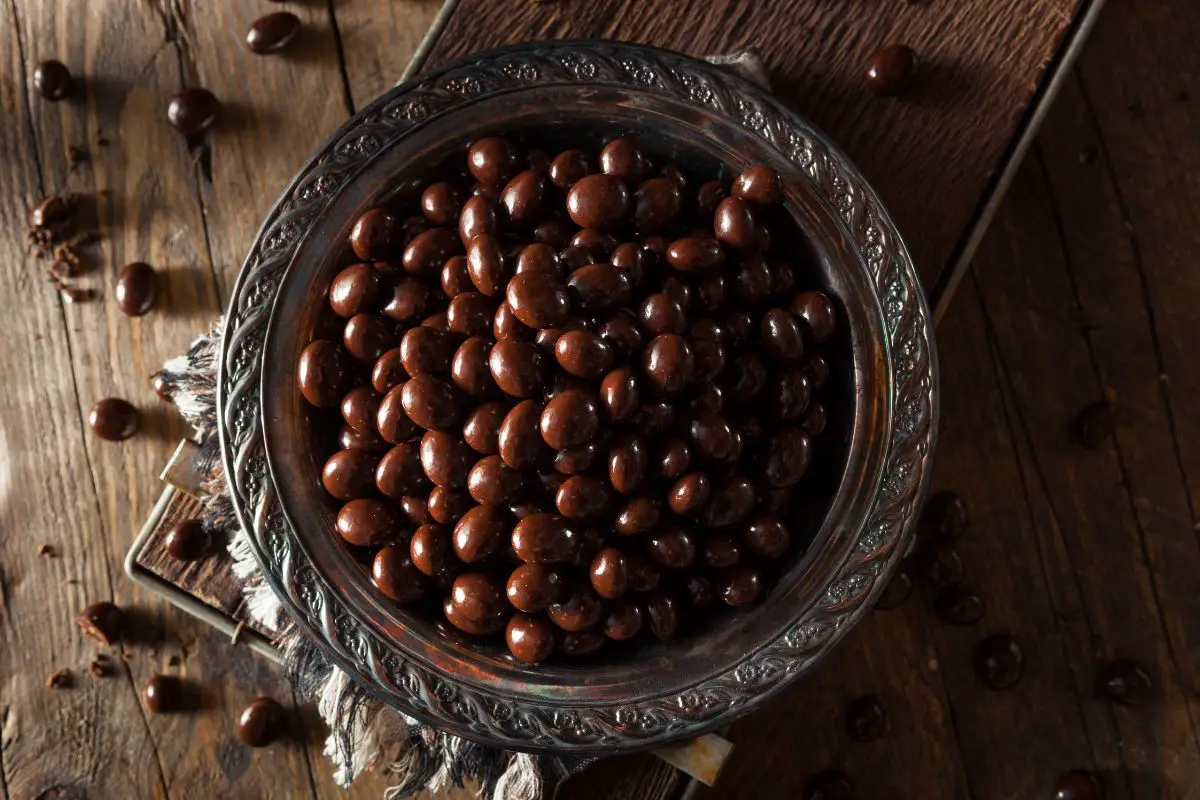Table of Contents
*This post may contain affiliate links. As an Amazon Associate we earn from qualifying purchases.
Coffee lovers everywhere, have you ever taken a moment to admire the shimmering exterior of your favorite espresso beans? It’s not just a cosmetic feature, folks. In fact, the shine of espresso beans can reveal a lot about the quality of the roast and the flavor you can expect from your cup of joe.
In this blog post, we will delve into the science behind why espresso beans are shiny and how it impacts their flavor and aroma. We will also bust some common myths about shiny beans and provide tips for choosing and preparing the best beans for your espresso shots.
So sit back, relax, and let’s get to the bottom of why espresso beans are shiny.
Introduction
Espresso is the foundation of many popular coffee drinks, from lattes to cappuccinos. But what sets it apart from other coffee brewing methods is the use of finely ground, high-quality coffee beans. And, if you’re a coffee connoisseur, you’ve probably noticed that the best espresso beans have a noticeable shine to them.
The shine of espresso beans can range from a light sheen to a bold, eye-catching gloss. But what causes this shine, and why is it important? In this section, we’ll provide an overview of the blog post and explain the significance of the shine of espresso beans.
What Causes Espresso Beans to be Shiny?
The shine of espresso beans is the result of a complex interplay between the roasting process, chemical reactions, and the moisture content of the beans. Let’s explore each of these factors in more detail.
The Roasting Process
The roasting process is the most critical factor in determining the shine of espresso beans. The heat from the roaster causes a series of chemical reactions that change the appearance and flavor of the beans. As the beans are exposed to heat, their moisture content begins to evaporate, causing the surface of the beans to become shiny.
Chemical Reactions During Roasting
During the roasting process, the chemical composition of the coffee beans changes as the heat causes the coffee oils to be released and migrate to the surface. These oils contain high levels of lipids and proteins, which are responsible for the shine of the beans. As the roasting process continues, the oils continue to migrate to the surface, creating a shiny exterior.
Impact of Roasting Time and Temperature
The time and temperature of the roasting process play a crucial role in determining the shine of the beans. If the roasting time is too short, the oils may not have enough time to migrate to the surface, resulting in dull, matte beans. On the other hand, if the roasting time is too long, the oils may start to break down, resulting in an uneven shine or discoloration.
The temperature of the roaster also plays a role in determining the shine of the beans. A higher temperature will cause the oils to break down more quickly, while a lower temperature may not allow the oils to migrate to the surface at all.
Role of Moisture Content
The moisture content of the beans also affects the shine of the espresso beans. If the beans are too moist, the oils may not be able to migrate to the surface, resulting in a dull appearance. On the other hand, if the beans are too dry,
the oils may break down too quickly, leading to an uneven shine or discoloration. It is important to strike a balance between moisture content and roasting time and temperature to achieve a consistent and uniform shine on the beans.
Myth Busting: Shiny Beans
Despite the scientific explanations, there are still many myths and misconceptions surrounding shiny espresso beans. In this section, we will bust some of these myths and set the record straight.
Myth 1: Shiny Beans are Over-Roasted
One of the most common misconceptions is that shiny beans are a sign of over-roasting. However, this is not necessarily true. As we discussed earlier, the shine of the beans is a result of the migration of coffee oils to the surface. A well-roasted bean will have a uniform shine, regardless of the degree of roast.
Myth 2: Shiny Beans are of Higher Quality
Another myth is that shiny beans are always of higher quality. While a shiny exterior can indicate a well-roasted bean, it is not a guarantee of quality. The taste, aroma, and overall quality of the bean are determined by factors such as the origin, type of coffee plant, and the growing and processing methods used.
Myth 3: Shiny Beans are More Flavorful
Finally, some people believe that shiny beans are always more flavorful than matte beans. However, this is not the case. The flavor of the coffee is determined by the roast level, origin, and type of bean, not the shine. A well-roasted bean, regardless of its shine, will produce a flavorful cup of espresso.
Choosing the Right Espresso Beans
Now that we’ve explored the science behind shiny espresso beans and debunked some common myths, let’s take a look at how to choose the right beans for your espresso shots.
Look for a Consistent Shine
A consistent shine on the beans is a sign of a well-roasted bean. Look for beans that have a uniform sheen or gloss, without any discoloration or unevenness.
Consider the Roast Level
The roast level is a key factor in determining the flavor of your espresso. Darker roasts have a bold, intense flavor, while lighter roasts have a milder, fruitier taste. Choose a roast level that matches your personal taste preferences.
Pay Attention to Origin and Type of Bean
The origin and type of bean can also impact the flavor of your espresso. Beans from different regions and countries have distinct flavor profiles, from bright and fruity to rich and chocolatey. Experiment with different origins and types of beans to find your favorite.
Check for Freshness
Finally, it is important to choose fresh beans for the best flavor and aroma. Look for beans that are roasted within the last two weeks, and store them in an airtight container to maintain their freshness.
Preparing Espresso Beans
Once you’ve selected your perfect espresso beans, it’s time to grind and brew them. Here are some tips for preparing the best espresso shots.
Grind Fresh, Just Before Brewing
Grind your beans just before brewing to ensure the freshest, most flavorful espresso. A fine grind is best for espresso, as it allows for maximum extraction and a rich, creamy shot.
Use the Right Brewing Method
Choose a brewing method that best suits your needs and preferences. Espresso machines, stovetop espresso makers, and manual espresso presses are all great options for brewing delicious espresso shots.
Experiment with Different Ratios and Techniques
Experiment with different ratios of coffee to water, as well as different brewing techniques, to
find the perfect balance for your taste. A 1:2 ratio of coffee to water is a good starting point, but you may prefer a stronger or weaker shot depending on your preferences. Don’t be afraid to try different methods, such as using a different grind size or tamping pressure, to see how it affects the flavor and extraction of your espresso.
Store Espresso Beans Properly
Proper storage is crucial for maintaining the freshness and flavor of your espresso beans. Store your beans in an airtight container, away from light, heat, and moisture. This will help to keep the oils and flavor intact, ensuring that your espresso shots always taste delicious.
Conclusion
In conclusion, the shine on espresso beans is a result of the migration of coffee oils to the surface during the roasting process. A consistent, uniform shine is a sign of a well-roasted bean, but it does not necessarily indicate higher quality or a more flavorful cup of espresso. When choosing your beans, consider the roast level, origin, type of bean, and freshness, and be sure to store your beans properly. With these tips, you’ll be able to brew the perfect espresso shots every time.
So there you have it, folks! The mystery of shiny espresso beans solved. No more myths, no more misconceptions, just the facts. If you’re looking for the best espresso beans on the market, be sure to check out our top picks, and happy brewing!


